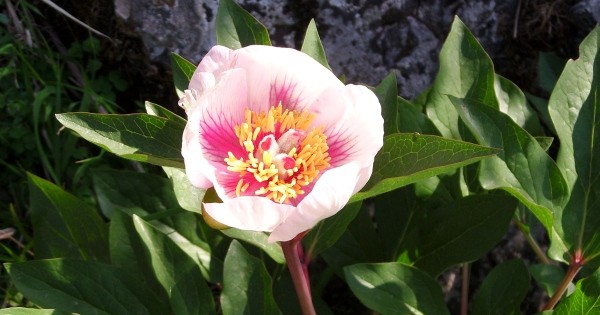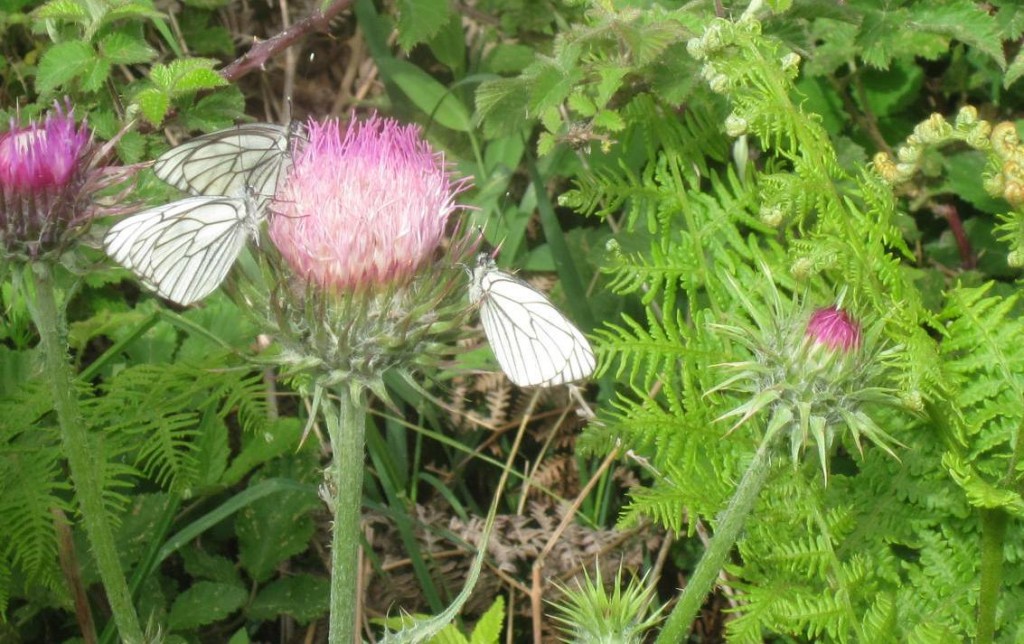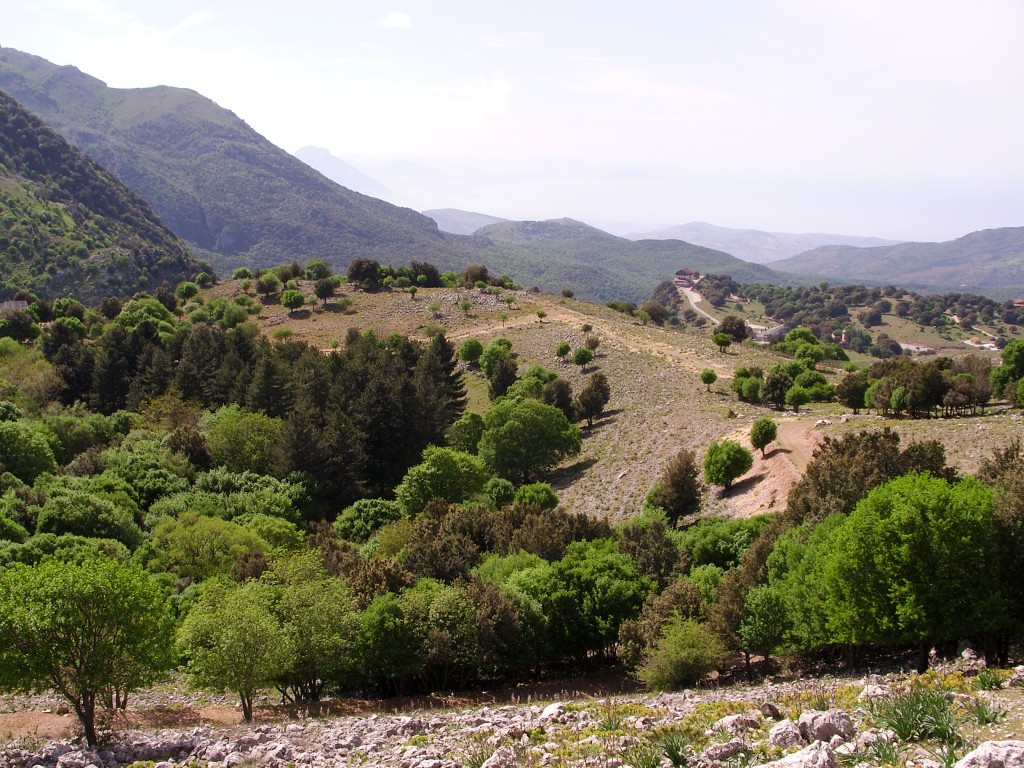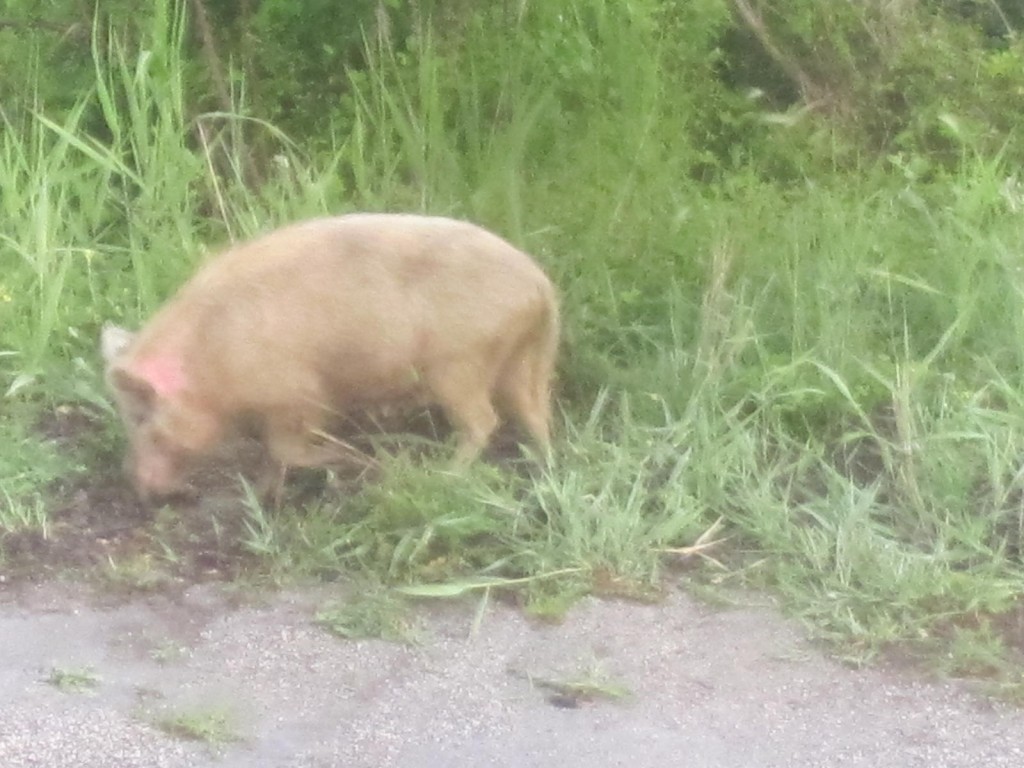 Dr Lynne Viti continues her blog series about her recent walking holiday to Sicily with ATG, in this installment she describes her trek across the Madonie Mountains. Lynne teaches in the Writing Program at Wellesley College, near Boston, Massachusetts. This blog is just one of a series of articles written by Lynne about her trip, all of which can be found on her own blog site. You can also find her on Twitter @LynneViti.
Dr Lynne Viti continues her blog series about her recent walking holiday to Sicily with ATG, in this installment she describes her trek across the Madonie Mountains. Lynne teaches in the Writing Program at Wellesley College, near Boston, Massachusetts. This blog is just one of a series of articles written by Lynne about her trip, all of which can be found on her own blog site. You can also find her on Twitter @LynneViti.
The weather is clear, promising to be a good day for a very long hike. Signor Conti, the apron-clad padrone of Villa Raino, joins us to bid goodbye to us, and we set off onto a new route, up a long ribbon of farm tracks. The road slopes up gently. As we walk, we glance over at the mountaintop village of Gangi, and I can hardly believe that we climbed down from back up to, then back down in a period of 36 hours—hard walking.
But we haven’t done truly hard walking—yet. We make our way through boggy, then rocky paths. My cardio performance is much better by today, but now, a new hurdle: balance, which is just as important. So is avoiding sliding in the mud, or slipping on wet rocks as we cross streams. The trekking pole comes in handy, though I wish I had two of them, as a couple of my fellow walkers use. We walk for three and a half hours, up, up, up, through thickets and around prickly bushes. The fragrance of wild herbs fills my nostrils; we walk amongst thyme, sage, mint, oregano, rosemary, parsley, basil—two and three foot-high bushes of the stuff. Twice we stop briefly to pull a long drink from our water bottles and share the trail mix of salty peanuts, raisins and walnuts.
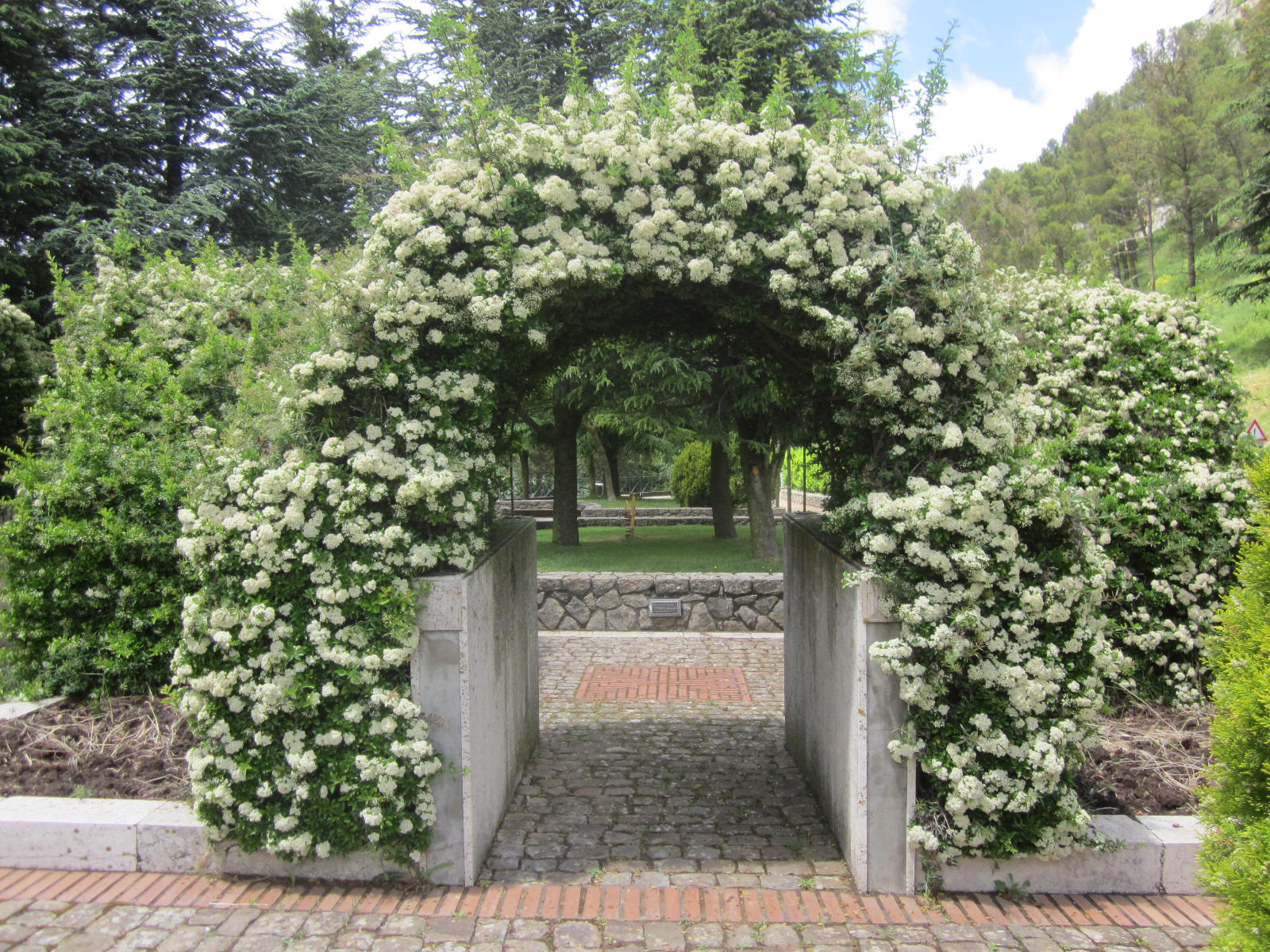
We look back to where we began our morning trek. A stone wall lies in the far distance. It looks very, very small. Ahead, we have three kilometers up and down yet another mountain, before we reach our lunch spot. I tighten my bootlaces, re-adjust my grip on the trek pole, and fall in line behind the others. We walk up more rocky slopes, sometimes balancing precariously on rocks that are partially wedged into the sod, sometimes jamming our boots into the side of the hill to get a toehold any way we can. After another half hour of rugged terrain, we hustle up a steep slope and climb over the guardrail onto a paved road into the village of Geraci Siculo. After those steep ascents and descents this morning, it takes a minute to get used to the level surface. Across the street is a small café. A few workingmen stand around the entrance talking and laughing. The white van is parked next to the town square, and Martina is setting up lunch in the well -manicured little park. At the public fountain, with it spigots gushing Geraci Siculo’s famous pure water, we step into line behind the guy who is filling two large containers, and one by one we fill our small water bottles.
Martina has created three more salads for us: green beans with onions; curly lettuce, iceberg and peaches; greens with goat cheese. I try speck for the first time, and a sharp pistachio-infused hard cheese. We devour glistening black olives, and drink four bottles of wine, two red wine and two white. Martina passes around sesame cookies.
A nap would be the most suitable sequel to this repast. But there is no nap and no more rest. We visit the café’s rest room in turn, and commence the 14 kilometer hike.
I am in no way prepared for the longest, most difficult walk of my life. Peer pressure gets me started and moves me along as we set out on the level road out of Geraci Siculo. Soon the hills begin, then they become sharper, with more and more pointed rocks protruding from the paths. In fact, the path often disappears—only Stephen knows where the path actually is. The trail twists and turns. The terrain changes quickly, from meadows of wildflowers and herbs to craggy hills. Where the path is blocked by gorse, Stephen pulls his secateurs from their leather sheath and clips away until there’s room for us to pass without tearing our trousers or scratching our calves. The ascent is the most demanding we’ve encountered. The descent is equally tricky. We pass a few goats, each with its own bell, then more goats of all colors, and soon we are walking through a forest of goats. They stand up on a high wall to our left and call to us, or perhaps they are jeering. On our right, we see even more goats, their iron collars and bells clanging, calming. A few of the kids wear face guards; it’s time for them to be weaned.
We walk on, and on, and on. About an hour passes, and we come to a small village. Martina pulls up in the white van. She carries a litre of peach tea and a stack of plastic cups. She pours a cold, sweet drink for each of us. Two more trekkers decide to call it quits, and accept Martina’s offer of a lift to the hotel. I don’t want to miss the Holly Wood, or the possibility of seeing wild peony, flowering asphodel, or perhaps a wild boar. I adjust my daypack, tighten my bootlaces yet again, and we are off for the last segment of our walk. It’s now late afternoon, and Stephen reckons we will arrive at the ski lodge by 6:30.
Time seems oddly suspended. I can’t tell if we have been walking now for an hour, two hours, or more. Or perhaps it’s only been 15 minutes. We navigate up rocky slopes, sometimes so steep that I have to look at the path and my boots and not down the side of the mountain. Even the goats have deserted us. We stop to admire a wild peony, then carry on through tall thistle, more mint, more sage growing between limestone rocks. We walk into the dark holly wood, ducking under low branches. I want to ask, “Are we almost there? “ like a child on a family vacation. We leave the wood and walk under a highway overpass with pillars that rise 300 meters. We walk on. Stephen points to the next mountain top— our Alpine ski lodge. I sigh. It will take us hours to get there!
We walk 150 meters down the slope from the paved road. Then we pull ourselves up the hill and walk a little faster, now that we’re on the macadam. We see the sign for our ski lodge. Halfway up the hill those ahead of me make a shushing sound, fingers to their lips and point to the grass slope alongside the road. A wild boar roots in a small thicket. We can see its snout and its forelegs. There is more rustling and we see three babies. I stop to take a few photos. We drag on, and hallelujah! our welcoming committee—my husband and three others from our group stand at the front door of the hotel, cheering us on. We are elated, and exhausted. Job well done: 24 kilometers up and down rough terrain. All I can think of, besides removing my boots, is food. We remove our mud-encrusted boots at the door, and carry them into the lodge.
Dinner includes much of what we’ve seen growing on our trek today—two primi, a thick minestrone of chickpeas and beans, and then pasta with a 14 herb pesto. The secondo is a manzo stew and potato. A dolce, fresh strawberries with a small scoop of vanilla gelato, and of course, the substantial Sicilian bread and red and white wines. I sleep soundly, dreaming of pointed grey rocks, noisy goats, and mother wild boar teaching her young to forage in the underbrush.
The first part of this blog is also available to read: Sicily, Walking from the Centre to the Sea. Day One: Enna to Gangi
If you are interested in travelling to Sicily, ATG have both escorted tours and independent walking routes.
Escorted Sicily Walking Holidays
Sicily – From the Centre to the Sea
Best of Western Sicily
Best of Eastern Sicily
The Aeolian Isles
Independent Sicily Walking Holidays (Footloose)
Sicily from the Centre to the Sea























 The best way to see a country is on foot! For an overview of all dates and prices across our
The best way to see a country is on foot! For an overview of all dates and prices across our  2025/2026 Tours For an overview of 2025/2026 dates, click here Idyllically located in unspoilt countryside between Siena – ‘the best-preserved,
2025/2026 Tours For an overview of 2025/2026 dates, click here Idyllically located in unspoilt countryside between Siena – ‘the best-preserved, 